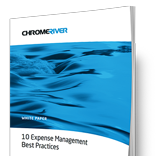
Generous business mileage reimbursement rates are a thing of the past, thanks to the IRS revamping the rates for 2016. The new, lowered mileage reimbursement rate for a business vehicle is 54 cents per mile, down a full 3.5 cents from last year’s 57.5 cents per mile. The new rate took effect Jan. 1. Although the mileage reimbursement has decreased by 3.5 cents, the average price of a gallon of gas has fallen from $3.50 a gallon in August of 2014 to $1.77 in February of 2016. That’s over a 50% decrease in the price of gas so even at 54 cents per mile you’ll get a good bang for your buck (or half buck).
Why the Reduction?
The continuing oil glut has rapidly reduced gasoline prices, with gas prices remaining at a lower level than they have over the past several years. The IRS likely took this into consideration when setting the mileage reimbursement rate for 2016, according to Haskell & White tax partner Tom O’Rourke.
The IRS uses various methods to calculate mileage reimbursement rates, with one of them relying on a compilation of data from the Runzheimer, a company that designs business vehicle and workforce mobility programs. The data consists of fixed and variable factors throughout the US, including items like:
- Fuel prices
- Auto insurance premiums
- Maintenance rates
- Insurance and registration costs
- Vehicle depreciation
IRS Rates vs. ‘Real’ Costs
Reunzheimer Senior VP Heidi Skatrud noted business drivers can expect an average monthly reimbursement of about $900 in 2016, which is about $200 lower than the “real” cost of operating and owning a car in the US.
While the IRS rate is meant to be a “safe harbor” deduction rate, it does not always gel with the actual cost of owning a car in the US. The IRS rate is a composite of the most popular vehicles across the country, and it doesn’t vary by location.
Skatrud suggests employers use a more dynamic system for calculating reimbursement rates for their business drivers, one that varies with the market and takes other factors into account. An alternative non-taxable method of calculation employers can use is known as the FAVR program, which stands for fixed and variable reimbursement.
This method allows for reimbursements based on the mileage driven, employee location and several other factors. The FAVR program takes location into account, offering a fixed reimbursement that can be paid out monthly for costs that tend to remain the same over the course of the year.
Annual Revamp
Although the standard mileage rate usually changes every year, most taxpayers are used to it increasing – not falling. The last time the mileage rate decreased was in 2014, but it only dropped 0.5 cents per mile. The 3.5 cents reduction for 2016 can have a more notable impact, particularly for companies that heavily depend on fuel deductions for lowering their overall tax bill.
Track the new mileage rates with Google Maps in Chrome River’s smart expense management software.
Search
Subscribe
Latest Posts
- Driving AP Success With Automation Part 3: How to Save Time and Money While Increasing Compliance
- Driving AP Success With Automation Part 2: How to Create More Efficient Processes With AP Automation
- VAT IT Partners With Emburse to Help Companies Save 27% on Expenses
- Driving Success With Automation Part 1: 4 Common AP Management Bottlenecks
- The Future of Finance: 5 Predictions For Digital Transformation in 2022 And Beyond
Posts by Category
Our choice of Chrome River EXPENSE was made in part due to the very user-friendly interface, easy configurability, and the clear commitment to impactful customer service – all aspects in which Chrome River was the clear winner. While Chrome River is not as large as some of the other vendors we considered, we found that to be a benefit and our due diligence showed that it could support us as well as any large players in the space, along with a personalized level of customer care.
We are excited to be able to enforce much more stringent compliance to our expense guidelines and significantly enhance our expense reporting and analytics. By automating these processes, we will be able to free up AP time formerly spent on manual administrative tasks, and enhance the role by being much more strategic.
